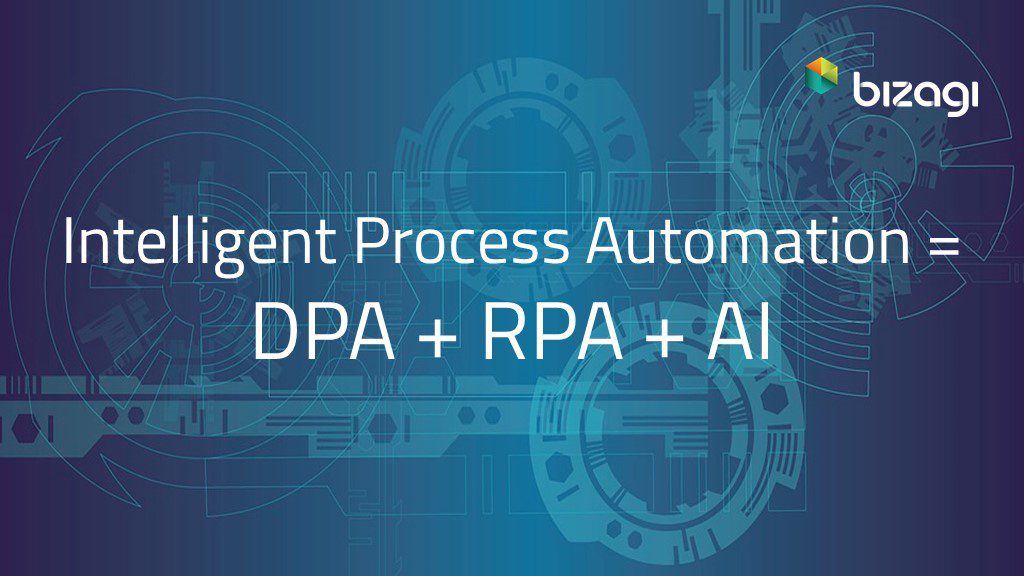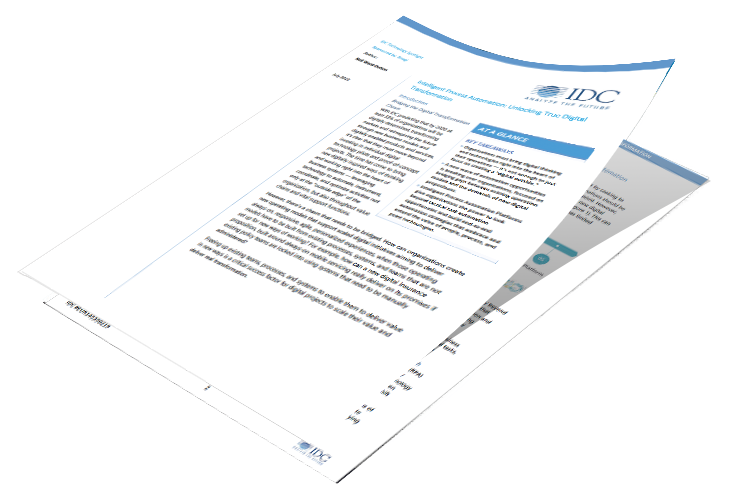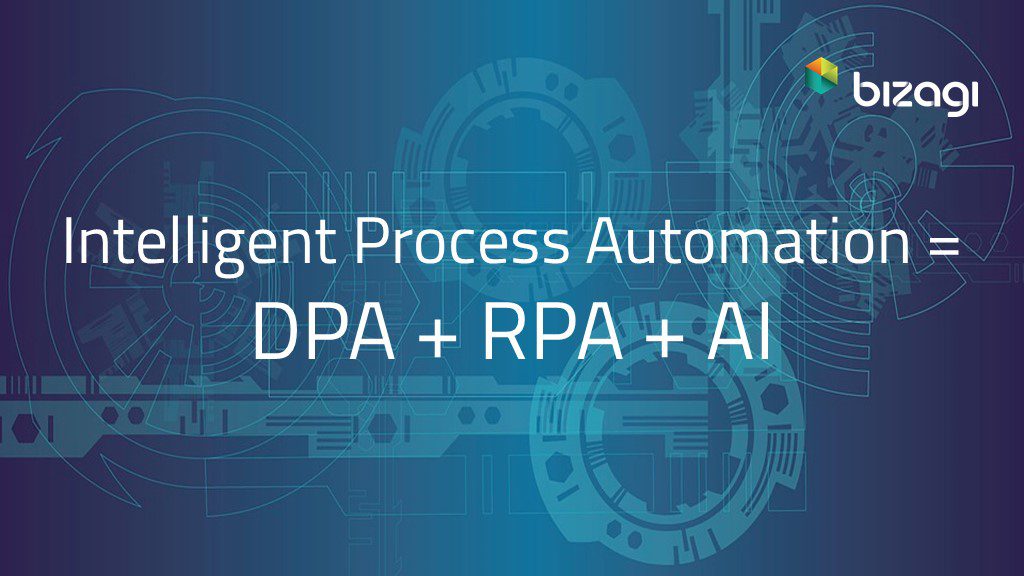What is Intelligent Process Automation (IPA)?
Blog: Bizagi Blog
Intelligent Process Automation is one aspect of a broader shift in technology, that of Automation as a whole. From driverless cars to autonomous drones, automation is helping make seemingly space-age technologies available today by creating and leveraging new forms of intelligence. Whether it’s customer communications in the form of desktop assistants, or automated tasks across an enterprise, automation is transforming the way we live and work.
Forrester predicts that this year automation will
“become the tip of the digital transformation spear, impacting everything from
infrastructure to customers and business models.” To deliver services
based on this automation, organizations need to orchestrate their complex
operations through automated processes.
What is Intelligent Process Automation’s main purpose?
Intelligent Process Automation (IPA) is the collection of technologies that come together to manage, automate and integrate digital processes. The primary technologies that make up IPA include Digital Process Automation (DPA), Robotic Process Automation (RPA) and Artificial Intelligence (AI).
DPA describes the agile set of intelligent process automation technologies that have evolved from their roots in BPM technology. DPA provides the agility and insight needed to enable a holistic approach to automating business processes. It enables you to manage the flow of data across your enterprise and makes it easier to identify areas for improvement and make agile changes.
Alternatively, RPA brings speed and efficiency to the table. Deploying robots that mimic human actions helps to reduce very manual, labor-intensive tasks, such as re-keying data from one system to another.
AI then contributes great intelligence and decisions to the mix. This brings another level of thinking to the automation as AI can analyze data in a way that a human could not, recognizing patterns in data and learning from past decisions to make increasingly intelligent choices.

While these technologies are all powerful in their own right,
deploying them individually is not enough. By uniting labor-saving solutions
such as RPA and AI with DPA, you can ensure that you are taking a strategic
approach and automating not only tasks, but entire processes, enterprise-wide.
Benefits
of Intelligent Process Automation
“Many companies across industries have been experimenting with IPA, with impressive results: automation of 50 – 70% of tasks, which has translated into 20 – 35% annual run-rate cost efficiencies,” reports McKinsey. This is achieved in the following ways:
Orchestration of humans and robots – Rather than simply deploying technologies like RPA in silos and leaving them to complete individual tasks, Intelligent Process Automation can help to co-ordinate work between robots, people and systems. Robotics are all well and good, but unless you integrate them with an IPA platform, you will end up with isolated solutions as opposed to enterprise-wide solutions.
Freeing up employees from routine tasks – Employees can be released from labor-intensive tasks by RPA and set to work in more efficiency areas. By combining with DPA and AI, you can rest assured that the correct decision is being made because it is planned out in the workflow with AI helping to make informed decisions along the way.
Ensuring proper governance and minimizing risk – By automating end-to-end processes, you can reduce the risk of errors such as incorrect data entry. RPA takes care of this automating tasks, but if it breaks or deviates from the organizational standard, IPA gives you the peace of mind knowing that your processes are consistently being completed.
End-to-end visibility of processes and the customer journey – When individual automation technologies are deployed, it can be hard to see the enterprise-wide result. Using IPA, you can see the entire process, allowing you to identify bottlenecks or points at which the customer journey could be smoother.
Agility and speed of process change – IPA enables you to not only accelerate end-to-end processing but also makes it easy to make agile changes to processes and the technologies that support them. This helps organizations to continually improve their business processes.
Intelligent Process Automation use cases
A typical example of a use case for Intelligent Process Automation is a situation where organizations need to bring data to customers, but manual tasks take up significant time, such as insurance claims processing or automating customer requests.
One of the largest banking groups in Latin America, Bancolombia, is using Bizagi as its Intelligent Process Automation Platform to deliver better customer service, both digitally and in-branch, helping humans and robots to work together effectively. The scale of what they have achieved in this space is beyond that of many of the world’s banks.
One example of their achievements is the combination of Robotic Desktop Automation, co-ordinated by the Bizagi IPA platform, to support its branch employees by presenting them with the correct customer information in real-time, with AI recommending the best service for that person. This has seen a 59% increase in efficiency of services time and freed up over 515,000 hours per year in-branch.

Intelligent
Automation: The new way to innovate
Legacy systems are blocking digital transformation as they leave
no room to incorporate new technologies. To deliver the disruption that so many
organizations need, they require a platform that acts as an intelligent
information conveyor belt that works in conjunction with your legacy systems
and can be easily reconfigured.
As an Intelligent Process Automation Platform, Bizagi unites DPA, RPA and AI to form an integrated solution, which allows you to manage each component, drive digital transformation and ultimately deliver enterprise-wide intelligent automation.
As I said before in a previous blog, “Welcome to the age of intelligent automation.”When you combine the emerging software robot or digital worker with the information conveyor belt, an automated assembly line is created that digitizes organizational processes. Now add artificial intelligence on top of the process (which knows both context and intent) and you have the most disruptive vortex of new technologies.
It’s no longer about Intelligent Process Automation vs Robotic Process Automation, because IPA creates a wider strategy around RPA and helps you get the most out of your robots. Rather than deploying technologies in isolation, unite them with an IPA platform to gain the agility and stability you need. This way you can identify where robots should be deployed and orchestrate your digital workforce while connecting your employees, customers and business partners.
“Advances in artificial intelligence,
robotics, and automation, supported by substantial capital investments, are
fueling a new era of intelligent automation, which is likely to become an
important driver of organizational performance in the years to come, says Deloitte.
“It is important for companies in all sectors to understand
and adopt intelligent automation, or risk falling behind.”
To find out the benefits of using Intelligent Process Automation in your organization and the particular advantages of the Bizagi IPA platform, download IDC’s Technology Spotlight: ‘Intelligent Process Automation Unlocking True Digital Transformation’

The post What is Intelligent Process Automation (IPA)? appeared first on Bizagi Blog – Ideas for Delivering Digital Transformation.
Leave a Comment
You must be logged in to post a comment.








